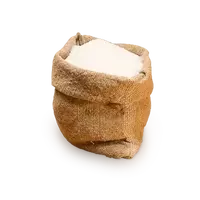Granulated sugar

In essence, sugar sand is the name adopted in the food industry and trade that has not previously passed the process of pressing sucrose or sugar. Sugar sand is a product that is obtained from the processing of sugar species of beet or cane.
Composition of granulated sugar
The composition of sugar sand, however, as in the case of other types of product, is based on sucrose. The composition of sugar sand contains up to 9
9. 8% carbohydrates, as well as a small amount of calcium, sodium, iron and potassium. This biologically active compound, when introduced into the human body, quickly disintegrates into glucose, as well as fructose.
Sugar sand refers to carbohydrates, which play a huge and indispensable role in the human diet. The thing is that carbohydrates are the energy necessary for a person's normal life. It is worth noting that starch compounds are also classified as carbohydrates according to the scientific classification.
However, sugar sand, unlike starch, is much lighter, and most importantly, it is absorbed faster by the human body. Historians argue that for the first time sugar began to be made, and in addition, the inhabitants of Ancient India began to eat. Over time, commercial supplies of cane sugar were established from India through Egypt to the Roman Empire.
It is also noteworthy that the Romans themselves began to cultivate sugarcane in Sicily in order to subsequently make sugar. However, with the fall of the mighty Roman Empire, the sugarcane cultivation culture was abandoned. Interestingly, sugar got its original name thanks to the ancient Indian language, translated from which शर्करः or śarkaraḥ means "grain of sand. "
Sugar appeared in Russia for the first time in the XI century. For quite a long time, sugar remained a food that was available only to the upper strata of the population. At the beginning of the 19th century, industrial production of sugar from sugar beets was established in the Russian Empire. Currently, there is a fairly rich variety of species, varieties, and in addition, forms of production of a product such as sugar.
The most popular and perhaps the most widespread form of product release in our latitudes can be considered granulated sugar. It is worth noting that granulated sugar is a source of so-called "empty calories. " Although this product has a high energy value, granulated sugar does not always only benefit.
Doctors and nutritionists believe that you should not eat sugar sand in large quantities. In addition, the calorie level of sugar sand is at a fairly high level. The average calorie content of granulated sugar is 399 kcal, which fall per 100 grams of product. Regular consumption of food containing a large amount of granulated sugar can significantly worsen human health, damage tooth enamel, as well as disrupt metabolism and lead to a set of extra kilograms.
granulated sugar 399 kCal
Energy value of granulated sugar (Ratio of proteins, fats, carbohydrates - ju):
Proteins: 0 g (~ 0 kCal)
Fats: 0 g (~ 0 kCal)
Carbohydrates: 99.8 g (~ 399 kCal)
Energy ratio (b | y): 0% | 0% | 100%
 Español
Español Français
Français Português
Português Русский
Русский 简体中文
简体中文 繁體中文
繁體中文 日本語
日本語 한국어
한국어 العربية
العربية Türkçe
Türkçe Қазақ
Қазақ Deutsch
Deutsch Italiano
Italiano Українська
Українська
